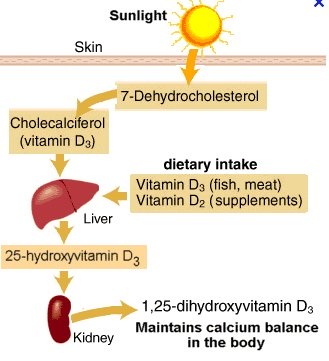Tanning accelerator and skin health
Has the invention of a tanning accelerator given rise to all the problems associated with sun tanning and the risk of skin cancer?

Appeal of tanning accelerators
Speed.
As the name suggests, some tanning products use an accelerator that speeds up the process of tanning your skin. This effectively provides a natural looking tan in a shorter amount of time. How wonderful is that in this ever increasingly busy or fast pace world we love in?
Convenience.
Also, it caters to those in search of the perfect tan without having to go outdoors into the real sunshine or even having to spend time sitting indoors under tanning bed lamps.
Skin sensitivities.
Another appeal is to those people who have difficult skins for tanning, for example blondes and red-heads, or those with pigmentation sensitivities.
However, there are some bad sides to tanning accelerators.
How does the tanning accelerator work?
 Melanistic Jaguar causes black skin color
Melanistic Jaguar causes black skin colorThe essential essence of how it works, is by creating a natural looking tan from the inside out, so to speak.
There are many different types of accelerators but they basically all aim to do the same thing, which is to increase the skin's production of melanin faster than normal.
The majority of accelerators come in a pill or lotion form, but one of the more recent developments by injection has been discontinued.
Tanning accelerator benefits and negatives
 Vitamin D creation process in the body
Vitamin D creation process in the bodyReduces skin aging.
Boosting the melanin content in the skin may reduce the effects of early skin damage and lessen the signs of aging. Darker skin is more resistant to the damaging and burning rays of the sun that can cause wrinkles and other skin problems as you age.
Reduced Vitamin D benefits.
However, having gone to the trouble of obtaining a tan by using an accelerator, most people choose not to spend more time outdoors exposed to the sun's UV rays. This in effect means they lose out on the benefits of Vitamin D that the skin creates after exposure to UVB rays.
Ingredient transparency.
Read all of the directions provided and familiarize yourself with all the ingredients on the label. If all the ingredients are not on the label make sure to request this information. This helps to manage your tanning expectations, as the results tend to vary from person to person.
Sanitation.
Remember that a hugely important aspect is managing the sanitization of needles.
Tanning accelerator ingredients
Tyrosine.
The most popular or common ingredient that allows an accelerator to work is an amino acid called tyrosine, which increases and stimulates the skin's production of melanin. The more melanin that is present naturally in the body, the darker your skin will become.
This is a completely natural occurrence, meaning that dark skinned people naturally have significantly more melanin present in their skins than pale skinned people. This means melanin is not a foreign substance for our bodies and it is through this that we get our own individual skin color. Melanin is also responsible for the dark brown or black pigments we have in hair colors and even the color of our eyes to some extent.
Psoralen.
Another common ingredient that helps tanning accelerators work is psoralen. It is an ingredient extracted from a Chinese herb, as a source of amino acids, whose main use is to increase the melanin levels in the skin.
Besides being used as a tanning accelerator, it is used for treating vitiligo, bald patches of hair, and psoriasis.
Psoralen can cause photosensitivity (sensitivity to light) so be sure to cater to your skin's needs if you decide to use this type of product.
Melanotan tanning accelerator
Many years of research have resulted in the production of a man-made synthetic hormone that mimics the actions of melanin in our bodies. The commercial name of this is Melanotan. This has been administered via an injection, which causes the skin tone to darken and results in a tan.
Some of the down sides reported from using Melanotan, (apart from the mere fact that introducing an unnatural, synthetic substance into one's body is not desired by many), include nausea, headaches, leg pain, increased libido and decreased appetite. The latter 2 are not considered downsides by many and have even caused it to be nicknamed 'The Barbie Drug'!
According to Wikipedia it was originally "under development as drug candidate for female sexual dysfunction and erectile dysfunction but clinical development ceased by 2003, and as of 2017, no product containing melanotan was marketed and all commercial development had ceased. Unlicensed and untested powders sold as "melanotan II" are found on the Internet, and purported to be effective as "tanning drugs", though side effects such as uneven pigmentation, new nevi (moles) and darkening or enlargement of existing moles are common and have led to medical authorities discouraging use."
Melanotan-1 and Melanotan II are both synthetic versions of melanocyte stimulating hormone. They were created, synthesized and developed at The Arizona Cancer Center located at The University of Arizona. Melanotan-1 is a linear, full length peptide containing 13 amino acids. Melanotan II is a shortened, circular version of Melanotan-1.




New! Comments
Have your say... please leave me a comment in the box below.